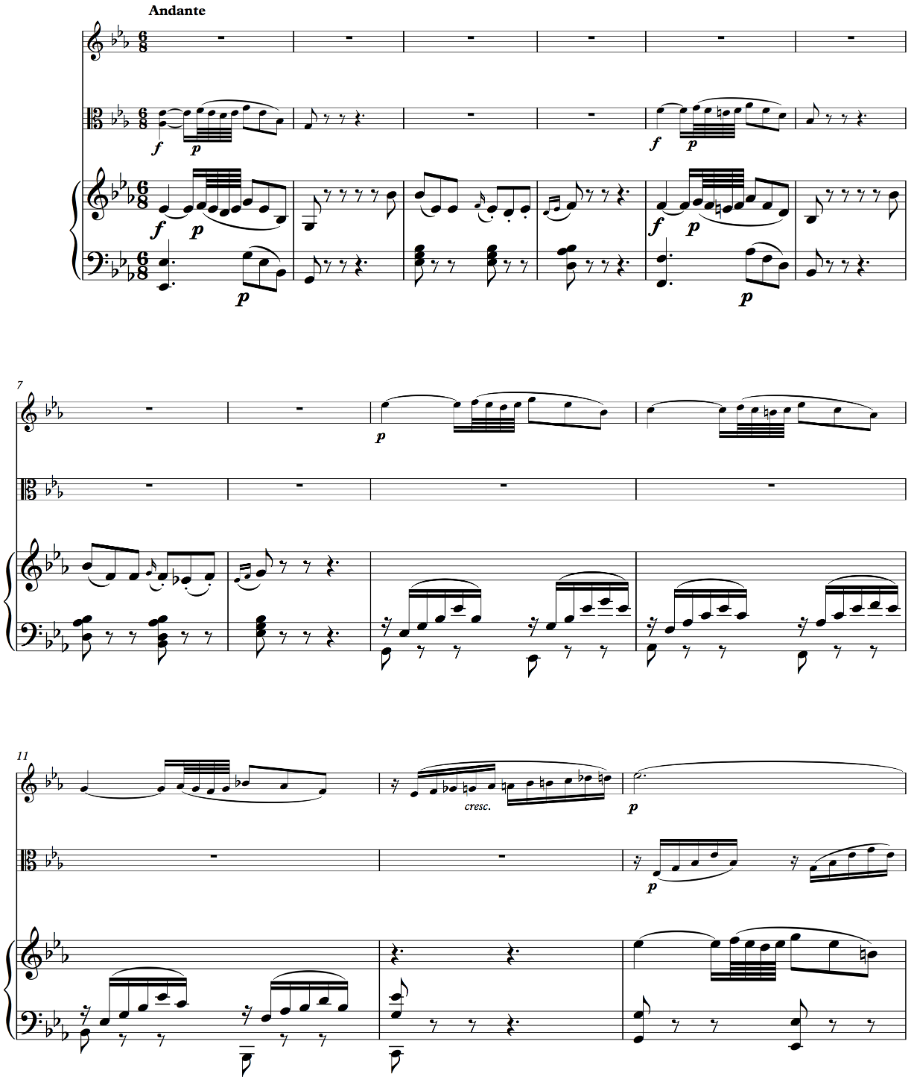4.5: Classical Theme Types - Compound Sentence
- Page ID
- 61969
The compound (or 16-bar) sentence expands both the presentation and continuation phrases of a regular sentence to a length of eight bars each.
Each 2-bar basic idea is replaced by a 4-bar compound basic idea in the expanded presentation.
A “typical” continuation would have approximately four bars of continuation function followed by four bars of cadential function, but in a compound sentence, this varies greatly. The continuation is commonly shortened or expanded.

The eight bars that comprise the continuation of the main theme below are constructed from two compound basic ideas, the first beginning on tonic and moving to dominant (mm. 1-4), and the second beginning with dominant harmony and moving back to tonic (mm. 5-8).
Initially, the continuation seems as if it will end after only 4 bars, in m. 12. But the clarinet is missing at the the downbeat of m. 12, and instead begins a link to a four-bar repetition. In this repetition (mm. 13-16), the clarinet melody from mm. 9–12 is played by the piano, who cadences clearly with a PAC at the downbeat of m. 16.

COMPOUND SENTENCE: MOZART, TRIO IN E-FLAT MAJOR FOR CLARINET, VIOLA, AND PIANO, K. 498, I, MM. 1-16


